The number of international migrants has been increasing over the decades. That changed the demographic composition of society significantly. In Sweden, 26.9% of the population has foreign backgrounds according to the national statistics 2022 (1). Foreign backgrounds are defined as those who were born outside of Sweden or those who were born in Sweden, but both of their parents were born outside of Sweden. We see the incremental trend of foreign background individuals to the population from Figure 1.
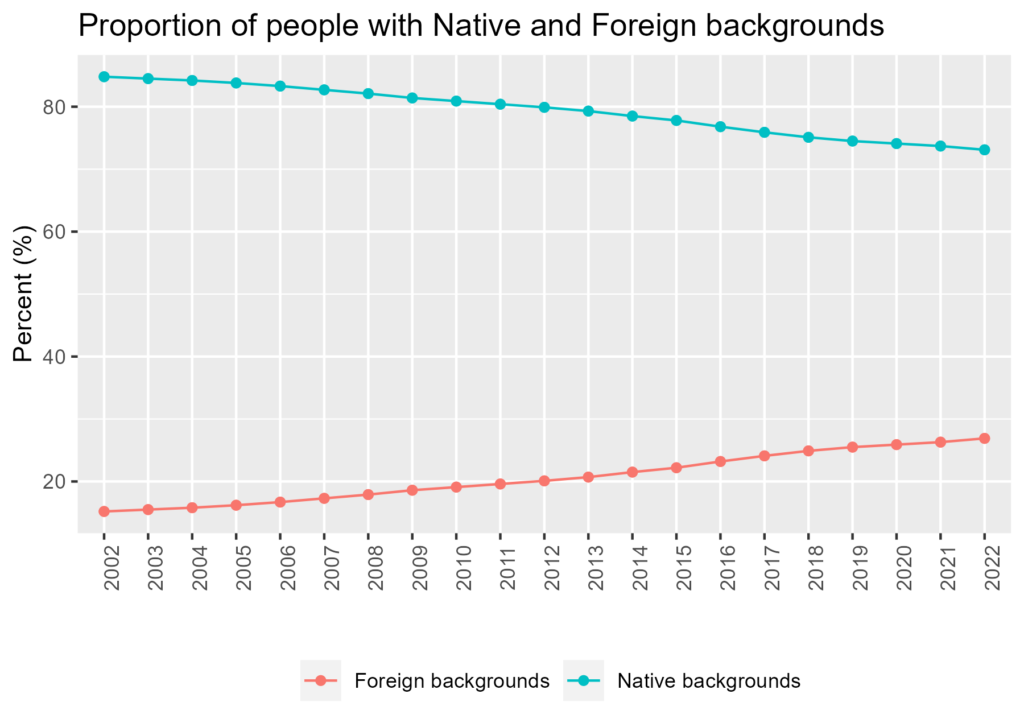
When we divide the Native and Foreign backgrounds further in detail, the increase of foreign-born individuals is the most prominent (Figure 2).
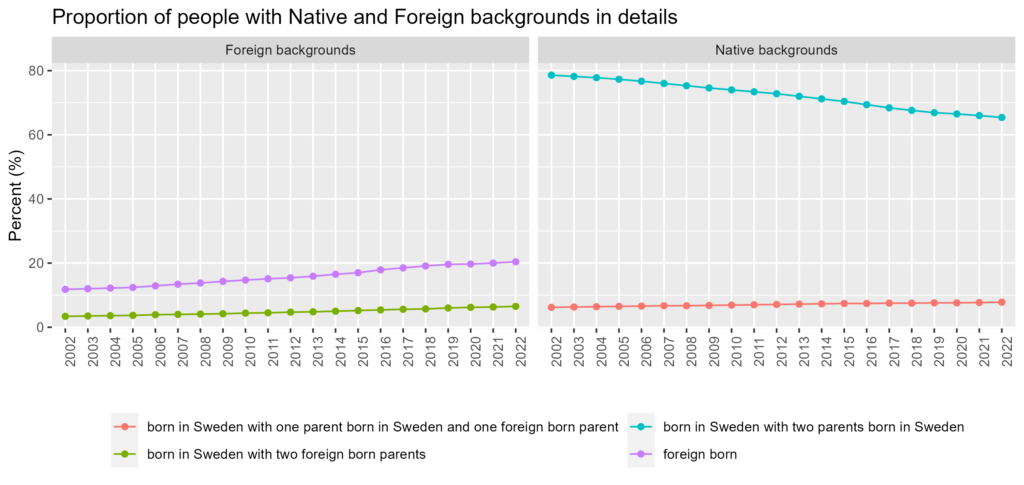
Immigration history in Sweden dates back to the post-war period. From the 1940s to the 1970s, Sweden experienced great economic growth by being unharmed by the war. That resulted in receiving a large number of labor migrants from Finland and other central and southern European countries. From the 1980s, Sweden started receiving many refugees fleeing from war and political persecution. The major countries were Chile, Iran, Iraq, Syria, Afghanistan, Türkiye, former Yugoslavia, Somalia, and Eritrea. As a result of being the most lenient immigrants-receiving country in the EU, the number of immigrants relative to the national population recorded the highest in 2016 among other EU countries. Sweden then, changed their immigration policy drastically to receive the minimum number of refugees per the UN refugee convention (3).
Figure 3 shows the number of immigrations to Sweden from 2000 to 2022. We can see the dramatic increase from 2011 to 2016 which was the phase when Sweden introduced the lenient immigration policy. The number then dropped towards 2020 by changing their policy, especially for asylum-seeking immigrants.
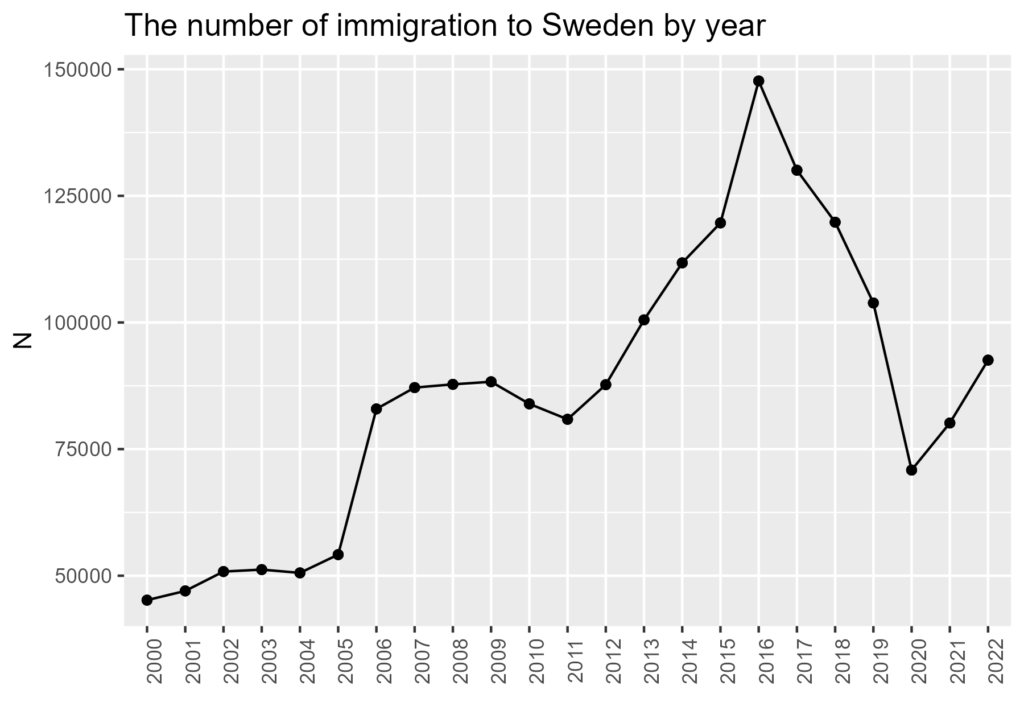
The next figure shows the top three countries which had the highest number of immigrants relative to the total number of immigrants in the respective year (Figure 4). We can see that the immigrants were predominantly from Iraq from 2000 to 2009 and then Syria from 2013 to 2018. There were some shares by Nordic countries in the beginning of 2000s but then the share changed to mostly by war-stricken countries, such as Somalia and Eritrea. Poland, on the other hand, continuously shared some parts even before 2000 (data not shown), which mainly contains labor migrants.
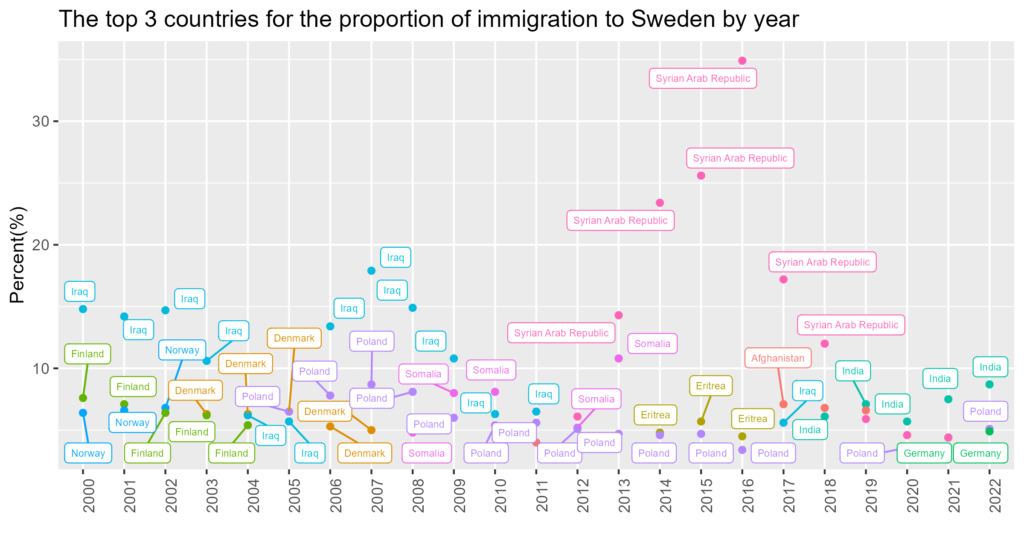
Finally, Figure 5 shows the proportion of immigration by reason. People migrate to another country for different reasons, and in Sweden, seeking asylum or family reunification are the major reasons.
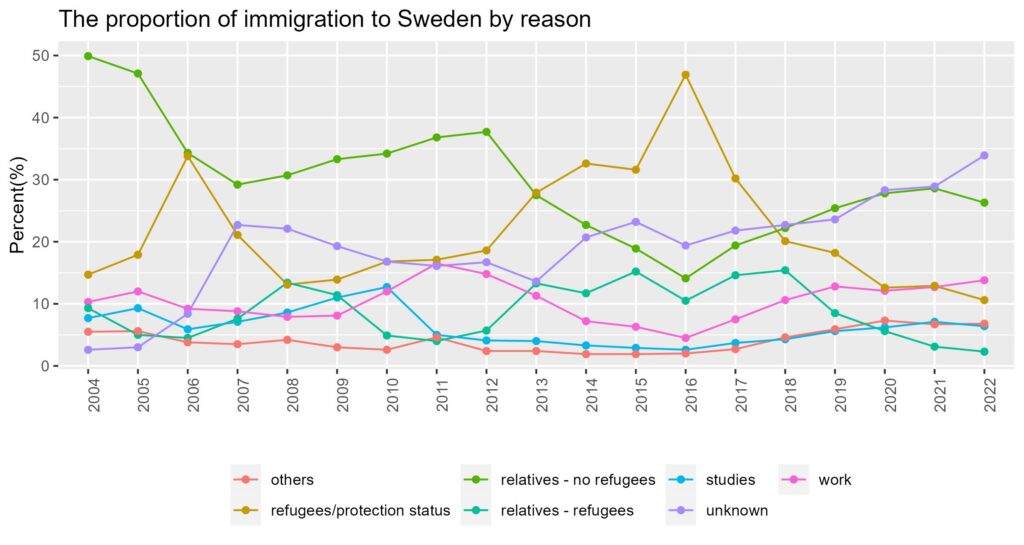
Refugees/protection status peaked in 2016 and decreased its proportion afterward. As a result, the proportion of relatives – refugees decreased and the proportion of other reasons increased.
As we have seen, the immigration situation is dynamic. It is influenced by a number of factors, such as immigration policy, war and conflicts, and global economy. Therefore, it is difficult to prospect the immigration situation in the future. However, what we know for sure is that one-fourth of citizens have immigrant backgrounds in Sweden, and securing their welfare is crucial.
References
1. Statistics Sweden. Statistiska Centralbyrån. 2023 [cited 2023 Nov 9]. Population in Sweden by Country/Region of Birth, Citizenship and Swedish/Foreign background, 31 December 2022. Available from: https://www.scb.se/en/finding-statistics/statistics-by-subject-area/population/population-composition/population-statistics/pong/tables-and-graphs/foreign-born-citizenship-and-foreignswedish-background/population-in-sweden-by-countryregion-of-birth-citizenship-and-swedishforeign-background-31-december-2022/
2. Statistics Sweden. Statistiska Centralbyrån. 2023 [cited 2024 Feb 7]. Population. Available from: https://www.scb.se/en/finding-statistics/statistics-by-subject-area/population/
3. Lundahl L, Lindblad M. Immigrant Student Achievement and Education Policy in Sweden. In: Volante L, Klinger D, Bilgili O, editors. Immigrant Student Achievement and Education Policy: Cross-Cultural Approaches [Internet]. Cham: Springer International Publishing; 2018 [cited 2024 Jan 29]. p. 69–85. (Policy Implications of Research in Education). Available from: https://doi.org/10.1007/978-3-319-74063-8_5
